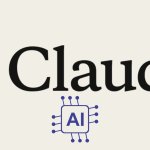In the ever-evolving landscape of agriculture, technology continues to play a pivotal role in enhancing efficiency, productivity, and sustainability. One of the most significant advancements in recent years is the integration of Artificial Intelligence (AI) in precision agriculture.
This transformative approach is making waves in various crop cultivation, and in this comprehensive exploration, we delve into the realm of AI-enhanced precision agriculture for apples. We will discuss the innovative applications such as smart monitoring systems, predictive analytics, and automated harvesting techniques that are revolutionizing apple farming.

Smart Monitoring Systems
Smart monitoring systems, powered by AI, have become integral components in modern apple orchards. These systems utilize an array of sensors, cameras, and other data-collecting devices to monitor various aspects of orchard conditions. For instance, soil sensors measure moisture levels and nutrient content, ensuring optimal growing conditions. Drones equipped with high-resolution cameras provide real-time images of the entire orchard, helping farmers identify potential issues such as diseases, pests, or uneven ripening.
AI algorithms analyze the vast amount of data collected from these monitoring systems, providing actionable insights. These insights empower farmers to make informed decisions about irrigation, fertilization, and pest control, ultimately maximizing yield and minimizing resource usage. The ability to detect and respond to issues promptly is a game-changer in apple farming, as it helps prevent crop losses and ensures the overall health of the orchard.
Predictive Analytics
The integration of AI in apple farming extends beyond real-time monitoring to predictive analytics, offering farmers the ability to foresee and mitigate challenges before they escalate. AI algorithms process historical data, weather patterns, and other relevant information to generate predictive models. These models can forecast factors such as crop yield, disease outbreaks, and optimal harvesting times.
Predictive analytics enable farmers to plan and allocate resources efficiently. For example, knowing the expected yield allows for better inventory management and market planning. Additionally, predicting disease outbreaks enables preemptive measures, reducing the reliance on pesticides and minimizing environmental impact. The integration of weather data into predictive models assists farmers in planning irrigation schedules, ensuring water conservation and optimal crop growth.
Furthermore, AI-driven predictive analytics contribute to sustainable farming practices. By identifying periods of high pest activity or disease susceptibility, farmers can implement targeted interventions, reducing the overall use of agrochemicals. This not only benefits the environment but also improves the quality of the apples produced, meeting the growing demand for sustainable and eco-friendly agricultural practices.
Automated Harvesting Techniques
One of the most revolutionary aspects of AI in apple farming is the development of automated harvesting techniques. Traditionally, apple harvesting has been a labor-intensive process, requiring a significant workforce for efficient fruit picking. With the integration of AI-powered robotics and machine learning, the industry is witnessing a paradigm shift towards automation.
AI-driven robotic harvesters are equipped with advanced computer vision systems that can identify ripe apples with precision. These systems analyze factors such as color, size, and ripeness, ensuring that only the optimal apples are harvested. The use of robotic arms and grippers allows for delicate handling, minimizing damage to the fruit during the harvesting process.
The implementation of automated harvesting techniques addresses several challenges faced by traditional methods. It reduces dependency on manual labor, addressing labor shortages and increasing operational efficiency. Additionally, automated harvesters can work continuously, providing a faster and more consistent harvest, ultimately reducing time-to-market for apple producers.
The efficiency gained through automated harvesting also has economic implications. While the initial investment in AI-powered robotics may be substantial, the long-term benefits include lower labor costs, increased productivity, and improved overall profitability for apple farmers. This not only contributes to the economic sustainability of apple orchards but also enhances the competitiveness of the industry on a global scale.
Challenges and Considerations
While the integration of AI in apple farming brings about significant advantages, it is essential to address potential challenges and considerations associated with this technology. One such concern is the accessibility of AI technology for smaller and resource-constrained farmers.
The initial costs of implementing smart monitoring systems, predictive analytics, and automated harvesting techniques may pose a barrier for some growers. Government initiatives, subsidies, and collaborations with technology providers can play a crucial role in making AI-enhanced precision agriculture more accessible to a broader spectrum of apple farmers.
Another consideration is data security and privacy. The vast amount of data collected by smart monitoring systems and other AI applications raises concerns about who has access to this information and how it is utilized. Clear regulations and guidelines must be established to protect the privacy of farmers and ensure responsible use of data. Collaborations between technology developers, policymakers, and farmers can help strike a balance between harnessing the potential of AI and safeguarding sensitive information.
Moreover, the implementation of AI in apple farming requires a learning curve for farmers and agricultural workers. Training programs and educational initiatives are essential to familiarize stakeholders with the technology, ensuring effective utilization and maximizing the benefits offered by AI-driven solutions.
Future Prospects
The future of AI-enhanced precision agriculture for apples holds tremendous potential for further innovation and refinement. As technology continues to advance, we can expect even more sophisticated monitoring systems with enhanced sensing capabilities. Improved AI algorithms will lead to more accurate predictive analytics, providing farmers with actionable insights to optimize their orchard management further.
In the realm of automated harvesting, ongoing research and development efforts aim to make robotic systems even more efficient and adaptable. Innovations such as soft robotics and advanced machine learning algorithms will contribute to the development of harvesters capable of handling varying orchard conditions and apple varieties.
Collaborations between the agricultural sector and technology companies will play a crucial role in driving these advancements. Open communication channels, research partnerships, and knowledge-sharing platforms will facilitate the seamless integration of cutting-edge AI technologies into apple farming practices.
Conclusion
AI-enhanced precision agriculture is reshaping the landscape of apple farming, offering unprecedented opportunities for efficiency, sustainability, and economic viability. Smart monitoring systems, predictive analytics, and automated harvesting techniques are transforming traditional practices, empowering farmers to make data-driven decisions and overcome longstanding challenges.
As the integration of AI in apple farming continues to evolve, it is crucial for stakeholders to collaborate, addressing challenges and ensuring equitable access to these transformative technologies. With responsible implementation, AI has the potential to not only revolutionize apple farming but also pave the way for a more sustainable and technologically advanced future in agriculture.






